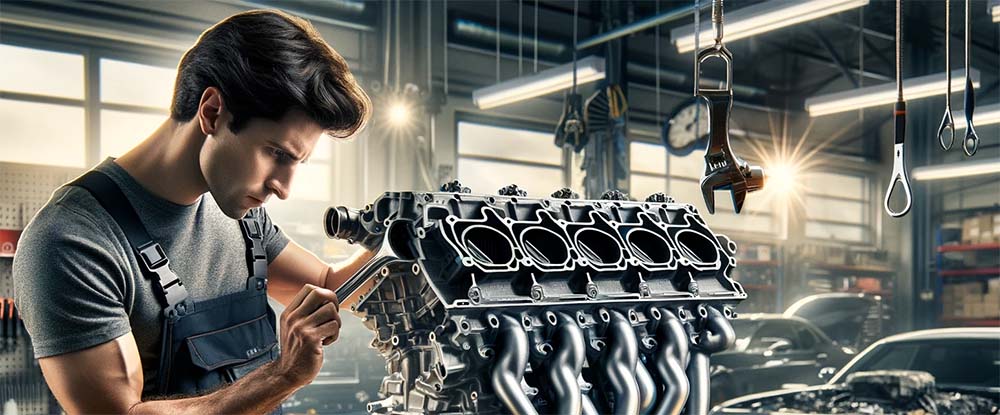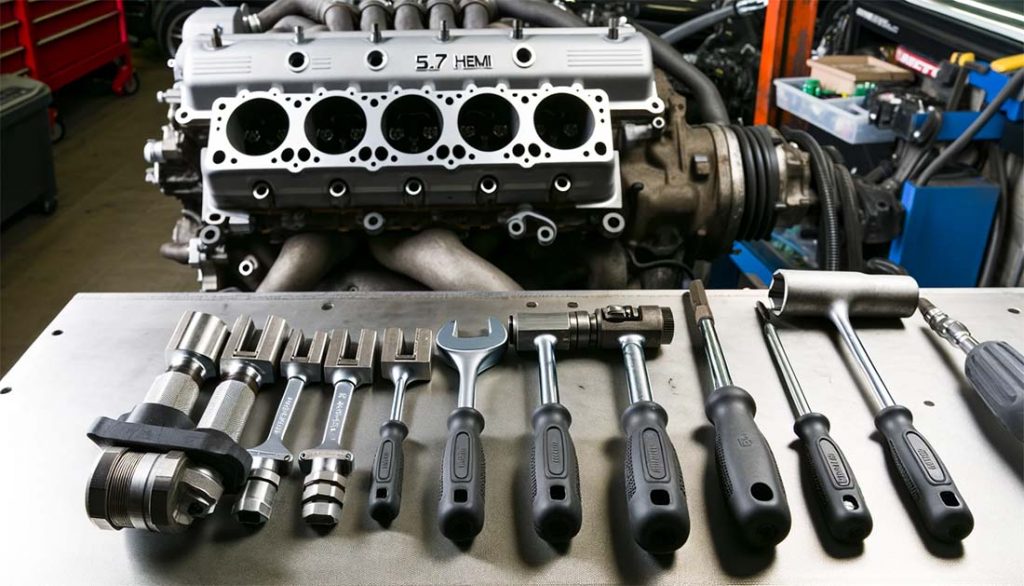Engaging in the removal of the intake manifold on a 5.7 Hemi engine is a task that underscores the intricate dance between mechanical prowess and meticulous attention to detail. This component, vital for the equitable distribution of the air-fuel mixture across the engine’s chambers, is central to the engine’s optimal performance. Encountering issues necessitating the manifold’s removal, whether for maintenance, troubleshooting, or upgrade purposes, demands a comprehensive understanding of the process. Ensuring each step is performed with precision not only safeguards the engine’s integrity but also enhances its longevity and efficiency.
Safety First
Before diving into the manifold removal, prioritizing safety is paramount. Initiating the process with an engine that has been allowed to cool eliminates the risk of thermal injuries caused by coming into contact with hot components. Disconnecting the vehicle’s battery ground cable negates potential electrical hazards, such as short circuits or unintended activation of components, creating a safer working environment. Equipping oneself with the necessary safety gear, including durable gloves to protect against cuts and burns, as well as protective eyewear to shield from debris or fluids, shields against unforeseen accidents that could result in injury. Preparatory steps extend beyond personal safety, involving the organization of tools and workspace. A clutter-free, well-lit area furnished with all requisite tools, including wrenches, sockets, pliers, and screwdrivers, streamlines the removal process, reducing the risk of damage to the engine and surrounding components due to misplaced or missing tools.
Initial Disassembly
The preliminary stage of the manifold removal involves a cautious disconnection of components intertwined with the intake manifold’s operation. This includes the strategic detachment of the fuel line, a move that prevents fuel spillage during the procedure, which could create a fire hazard and environmental concerns. Electrical connections, such as those to the Manifold Absolute Pressure (MAP) sensor and throttle body, require careful handling to avoid damage to the wiring or connectors, which could lead to operational issues or diagnostic troubles. The removal of vacuum lines, which route vacuum pressure to various components, and other ancillary hoses, each playing a pivotal role in the engine’s function and emissions control, demands a methodical approach to ensure proper reconnection during reassembly. Labeling each component as it’s removed with tags or markers serves as a critical step, ensuring a hassle-free reassembly by providing a visual reference for the correct routing and positioning of each part.

Inspection and Reinstallation Tips
Upon successful removal of the intake manifold, a thorough inspection is imperative. This inspection should focus on identifying any signs of wear, cracks, or damage to the manifold itself, as well as potential failure points that could compromise engine performance, such as worn gasket surfaces or corroded bolt holes. Reinstallation of the manifold, complemented by these inspection insights, necessitates precision to ensure the engine’s integrity and functionality are maintained. Essential tips include:
- Sealing the Deal: Verify the condition of the manifold gasket, opting for a replacement even in the absence of visible wear or damage to guarantee a perfect seal between the manifold and engine components, preventing vacuum leaks that could affect performance and efficiency.
- Bolt Check: Examine the manifold bolts for wear, such as stripped or damaged threads, or damage, including corrosion or cracks. Consider replacing any bolts that show signs of stress or corrosion to ensure proper clamping force and prevent potential failures during operation.
- Clean Contact: Ensure both the manifold and engine surfaces that mate together are impeccably clean and free from debris, such as gasket material, sealant residue, or dirt, to prevent leaks and maintain proper sealing.
- Torque Precision: Adhere to the manufacturer’s torque specifications when reattaching the manifold bolts, utilizing a torque wrench for accuracy. Proper torque ensures the manifold is secured without over-tightening, which could damage components or cause distortion.
Conclusion
The task of removing the intake manifold from a 5.7 Hemi engine, while intricate, is achievable with careful preparation and meticulous attention to detail. Each step, from the initial disassembly to the final reinstallation, is crucial in preserving the engine’s performance, reliability, and longevity. Armed with this guide, enthusiasts and professionals alike can approach this task with confidence, ensuring the heart of their vehicle remains in peak condition for years to come.

